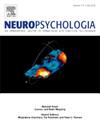经颅随机噪声刺激使ADHD和TD个体的时间复制方向相反。
IF 2
3区 心理学
Q3 BEHAVIORAL SCIENCES
引用次数: 0
摘要
非侵入性脑刺激正在被探索作为一种潜在的方法来增强认知功能和减轻多动症(ADHD)患者的症状,ADHD是儿童中最常见的神经发育障碍。时间感知,即估计和处理时间间隔的能力,在ADHD个体中经常受损,对日常任务如计划、决策、任务完成等至关重要。在这里,我们研究了经颅随机噪声刺激(tRNS)对ADHD个体时间感知的影响。共有40名参与者,包括20名ADHD患者和20名健康对照者,在完成时间感知任务时对前额皮质进行了tRNS。研究结果表明,tRNS提高了ADHD组的时间感知准确性,使他们的表现更接近准确的时间间隔。相比之下,健康对照组的时间感知准确性下降,在刺激后远离准确的时间间隔。这些结果表明,与健康对照组相比,tRNS对ADHD个体的时间感知产生了相反的影响。我们得出结论,tRNS可能为ADHD患者提供潜在的治疗益处。未来的研究可能会探索额外的tRNS会话或刺激不同的大脑区域是否会产生更有希望的结果。本文章由计算机程序翻译,如有差异,请以英文原文为准。
Transcranial random noise stimulation shifts time reproduction in opposite directions for ADHD and TD individuals
Non-invasive brain stimulation is being explored as a potential method for enhancing cognitive function and reducing symptoms in individuals with Attention-Deficit/Hyperactivity Disorder (ADHD), the most common neurodevelopmental disorder in children. Time perception, the ability to estimate and process time intervals, is often impaired in individuals with ADHD and is crucial for daily tasks like planning, decision-making, task completion, etc., Here we examined the effect of Transcranial Random Noise Stimulation (tRNS) on time perception in ADHD individuals. A total of 40 participants, including 20 individuals with ADHD and 20 healthy controls, underwent tRNS over the prefrontal cortex while completing a time perception task. The findings indicate that tRNS improved time perception accuracy in the ADHD group, bringing their performance closer to accurate time intervals. In contrast, the healthy control group showed a decline in time perception accuracy, moving further away from accurate time intervals following stimulation. These results suggest that tRNS produced opposite effects on time perception in ADHD individuals compared to healthy controls. We conclude that tRNS may offer potential therapeutic benefits for individuals with ADHD. Future research could explore whether additional tRNS sessions or stimulation of different brain regions might yield even more promising results.
求助全文
通过发布文献求助,成功后即可免费获取论文全文。
去求助
来源期刊

Neuropsychologia
医学-行为科学
CiteScore
5.10
自引率
3.80%
发文量
228
审稿时长
4 months
期刊介绍:
Neuropsychologia is an international interdisciplinary journal devoted to experimental and theoretical contributions that advance understanding of human cognition and behavior from a neuroscience perspective. The journal will consider for publication studies that link brain function with cognitive processes, including attention and awareness, action and motor control, executive functions and cognitive control, memory, language, and emotion and social cognition.
 求助内容:
求助内容: 应助结果提醒方式:
应助结果提醒方式:


